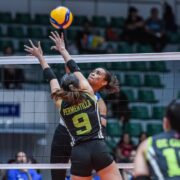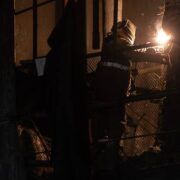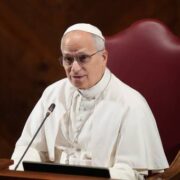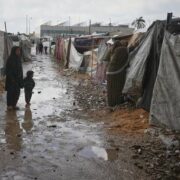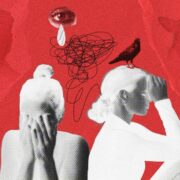‘Art reflects who we are as a people . . . no matter how diverse and divided we are’
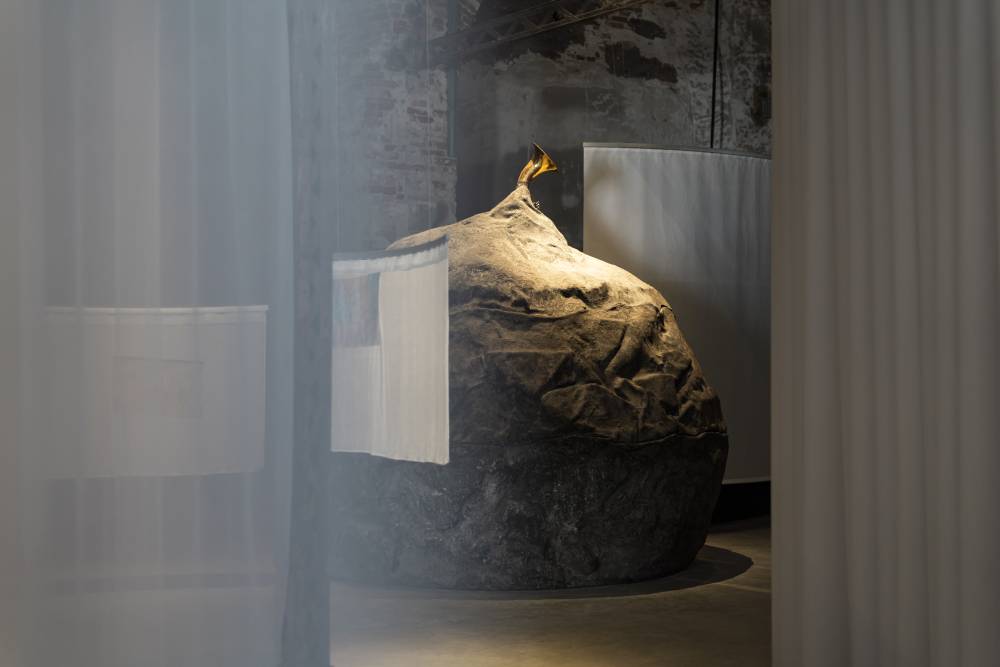
It is not Mark Salvatus’ goal to speak for the entire Philippines.He said this to Lifestyle during the vernissage of the Philippine Pavilion at this year’s Venice Biennale. Fragmented as we are as a nation, a tapestry of cultures and identities, the matter of representation often poses a problem.
During the opening of the exhibition, Senate President Pro Tempore Loren Legarda said, “Art reflects who we are as a people. Art reflects our soul. Culture is the string, the element that binds us as a nation, no matter how diverse and divided we are.”
In “Sa Kabila ng Tabing Lamang sa Panahong Ito (Waiting Just Behind the Curtain of This Age),” Salvatus turns to the personal as a way to build on and reveal the national.
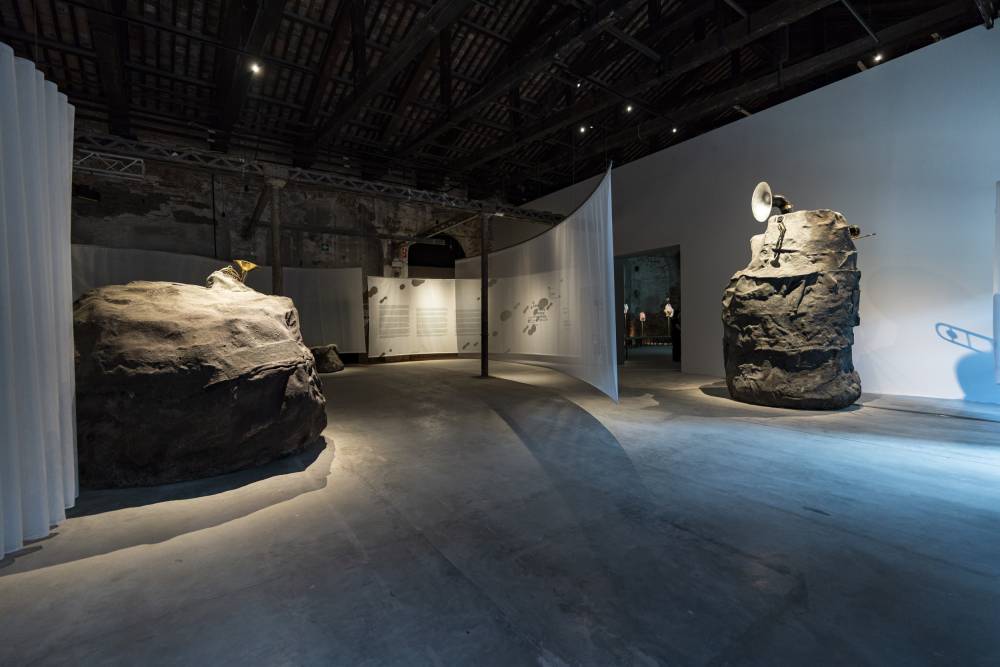
“If you represent something, you have a responsibility,” the artist said. “I cannot represent the Philippines as a whole. I can only represent something that I know and which is also something that is truthful and honest.”
And what he knows is his hometown. Lucban is a second-class municipality in the southern Luzon province of Quezon. It is home to the mystical Mt. Banahaw, which has served as the townsfolk’s protector for millennia.
It is also the home of Apolinario de la Cruz, more casually known as Hermano Puli, whose story and contributions have often been overlooked in the annals of history. The local preacher who created a religion exclusively for natives drew suspicion from the Spaniards, who executed him through mutilation, scattering his body parts throughout the land.
The title of the exhibit itself was based on a passage by Hermano Puli. Addressing his followers, he said, “Sa kabilang tabing ng panahong ito ay makakamit na natin ang tagumpay.”
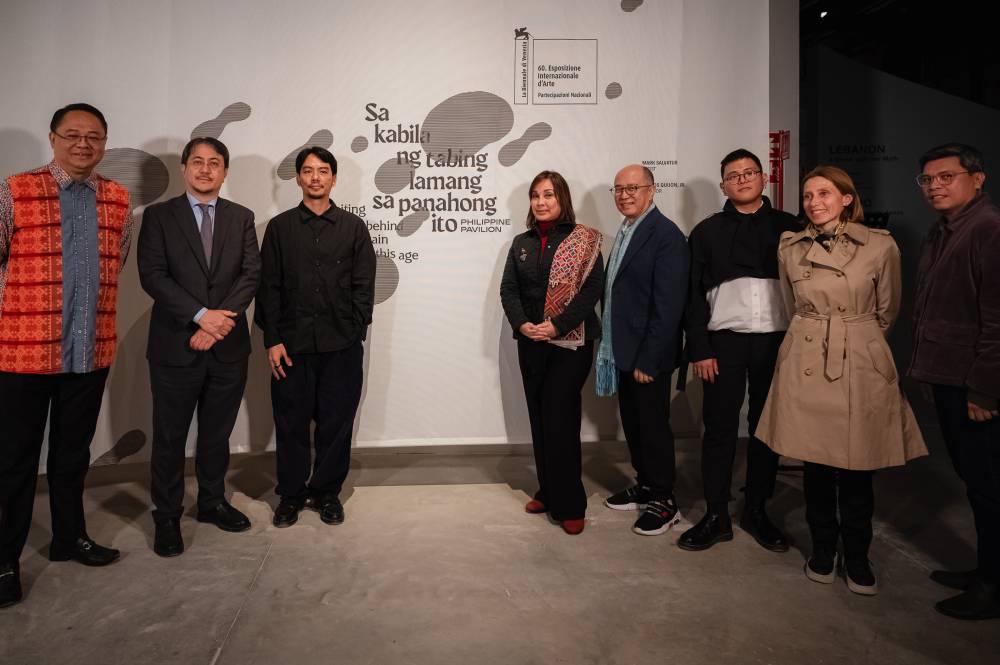
‘Revolutionary idea’
“It’s a revolutionary idea that is not dependent on whether you succeed today or not. It’s something that you anticipate, you hope for,” said New York-based curator Carlos Quijon Jr. “It relates to the idea of rehearsal, the anticipation of something coming—be it freedom or other things.”Hermano Puli’s “very local” resistance against the Spaniards became a spark that helped ignite revolutions by bigger names in Philippine history like Jose Rizal, Andres Bonifacio and Gomburza—uprisings that would later reshape our future as a nation. Through this lens, his tiny mutiny can be seen as a rehearsal of sorts.
Similarly, this year’s exhibit at the Philippine Pavilion aims not to categorically define what “Filipino” is, but to build upon and contribute to the archipelago’s continually developing national identity.Salvatus based the installation on his Mt. Banahaw research, picking up where his late grandfather left off and using personal archives, including his family’s photographs, experiences and stories. He is friends with one of the musicians from the marching bands of Lucban, whose actual instruments have been fused to the gigantic boulder islands strewn across the dimly lit room. A section of printed fabric features the topography of all revolutions that have happened since his birth year. His son Yoji even appears in the video.
As deeply personal as Salvatus’ work is, the appeal proves boundless, with foreign visitors going out of their way to look for the artist and sharing their appreciation for his work during the pavilion’s opening.
“It’s very specific but still very, very national,” said Quijon.
“Abstraction is important in making my artwork because it opens up to different conversations, not only on the Philippines. What is important is that these energies are shared,” Salvatus said.
According to Quijon, you get a different experience of the artwork depending on when you experience it or where you walk or to which you turn your attention first.
“For example, the projection screen will have a different quality depending on what time you arrive, because we have natural light coming from outside. It’s something that we wanted to accomplish in the exhibition,” said Quijon.
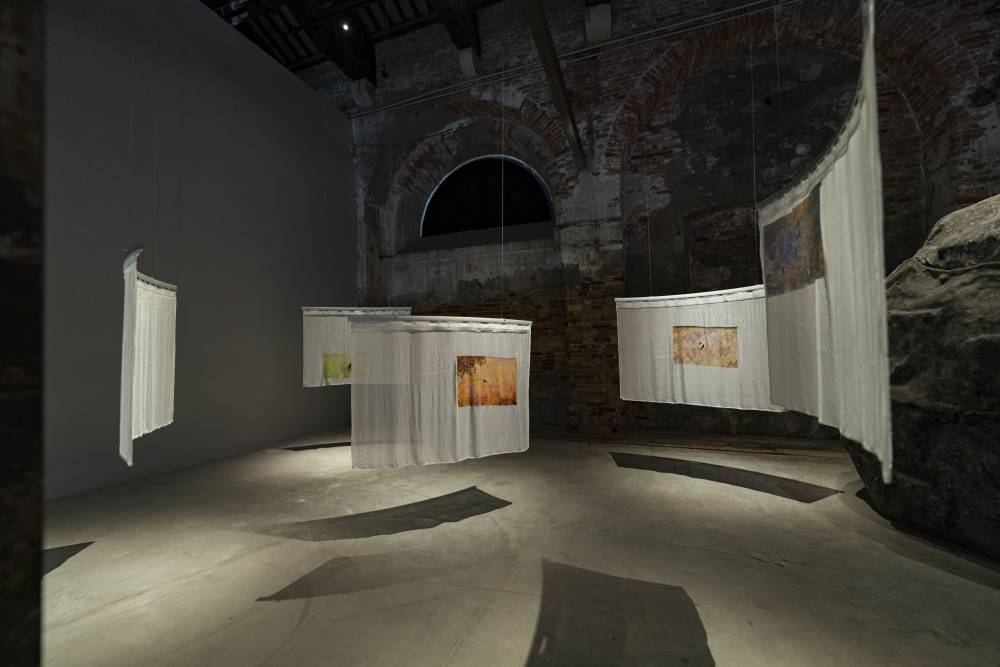
Five elements
The pavilion consists of five elements:
The first is the video work, which immediately catches the eye through the translucent curtains that define the space. It depicts various scenes including Mt. Banahaw, for which they have collaborated with brass musicians.
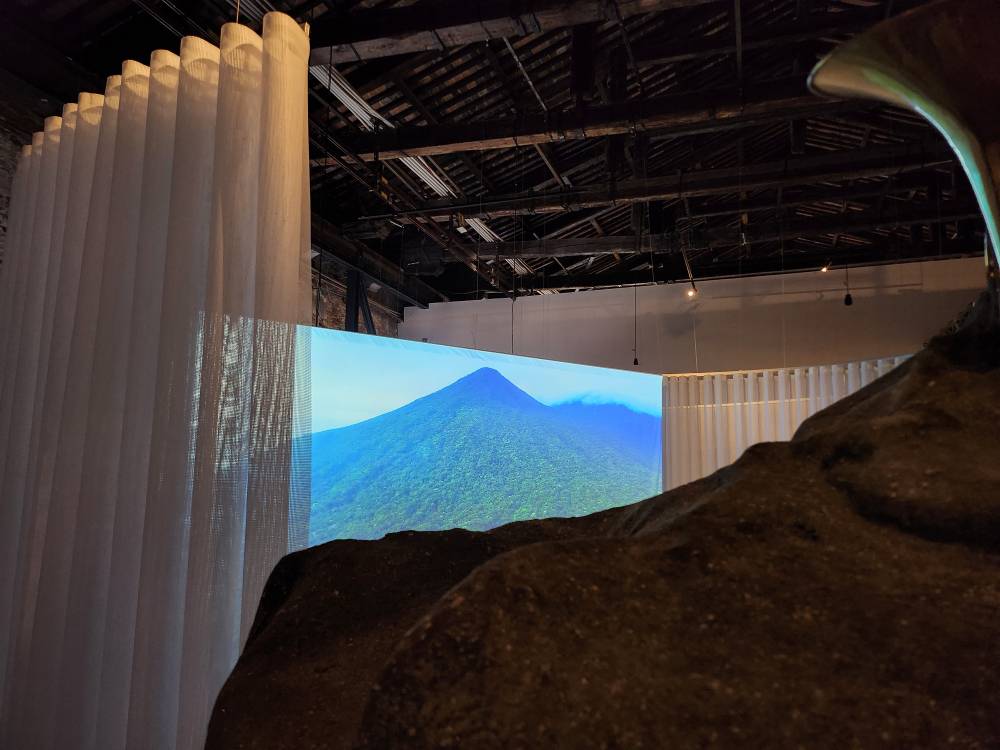
The second is the textile work, with the ethereal curtains shepherding guests through the gritty space. “The entirety of the exhibition encourages you to walk around,” Quijon added.
The third element is the 12 ambient speakers that play intermittent sounds. “These act as prompts to where you could go. If you hear a sutsot somewhere far, do you want to explore that?”
The fourth element are the multivalent rocks: They are speakers, but they are also furniture, in addition to being spectacular sculptures themselves.
“We wanted to create something magnificent and breathtaking,” Quijon said, “that even without reading anything about the work, it is already something interesting visually.”

“We have instruments embedded in the rocks. These are instruments from the actual instrumentalists of marching bands from Lucban,” he added. “Marching bands go around the town, waking up the entire town before proceeding to the town plaza.” This, according to Quijon, alludes to Hermano Puli’s way of preaching—walking around and talking to the people.
The final element is the screen-printed Google Map views of areas where revolutions have happened since Salvatus was born. This intimate experience serves as a counterpoint to the scale of the main exhibit.
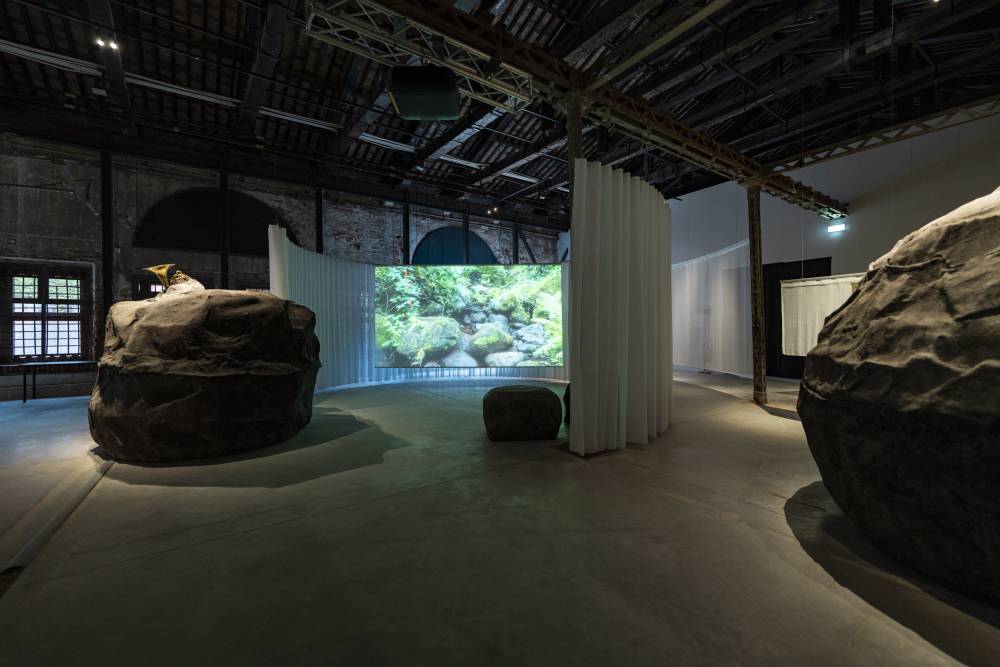
“A pavilion is an experience. It’s a visual spectacle, but also a conceptual spectacle. For me, it’s important to have those ideas,” he said.
During a lunch with the press, Legarda detailed the struggles she had to go through to bring the Philippines back to the Venice Biennale after an absence of 51 years—efforts that culminated in the country’s return in 2015 via a small space in Palazzo Mora. The sustained participation of the Philippine Pavilion at the Venice Biennale is a collaborative endeavor of the National Commission for Culture and the Arts, the Department of Foreign Affairs, and Legarda’s office. Now the Philippine exhibit occupies a space larger than it has in the past. But the struggle is not yet over. There is more to come, just behind the curtain of this age. INQ




